London has always been loyal host of heavy mists and fogs. However, the rise of industrial revolution, in the late 19th and early 20th century, took on a more sinister character. Coal plants and factories doubled the amount of fog and added toxic chemicals in atmosphere which resulted in creating a noxious smoky fog. Variations in atmospheric pressure and temperature could sometimes cause thick smog to settle over London for days at a time, restricting visibility and causing health problems.
The most notorious incident known as “The Great Smog” occurred in 1952. A weather phenomenon known as an anticyclone essentially placed a lid of warm air over London, trapping all of the city’s emissions at ground level. Visibility was nonexistent, and the city was paralyzed. The smog blanketed the London for five days in December, 1952. More than 12,000 people were died and 15,000 people were hospitalized. Thousands of animals and birds also died. This disastrous incident sparked modern environmental movements and led to legislation reducing the amount of air pollution in the UK.
Here below are some photographs that show how the London looked like during the Great Smog


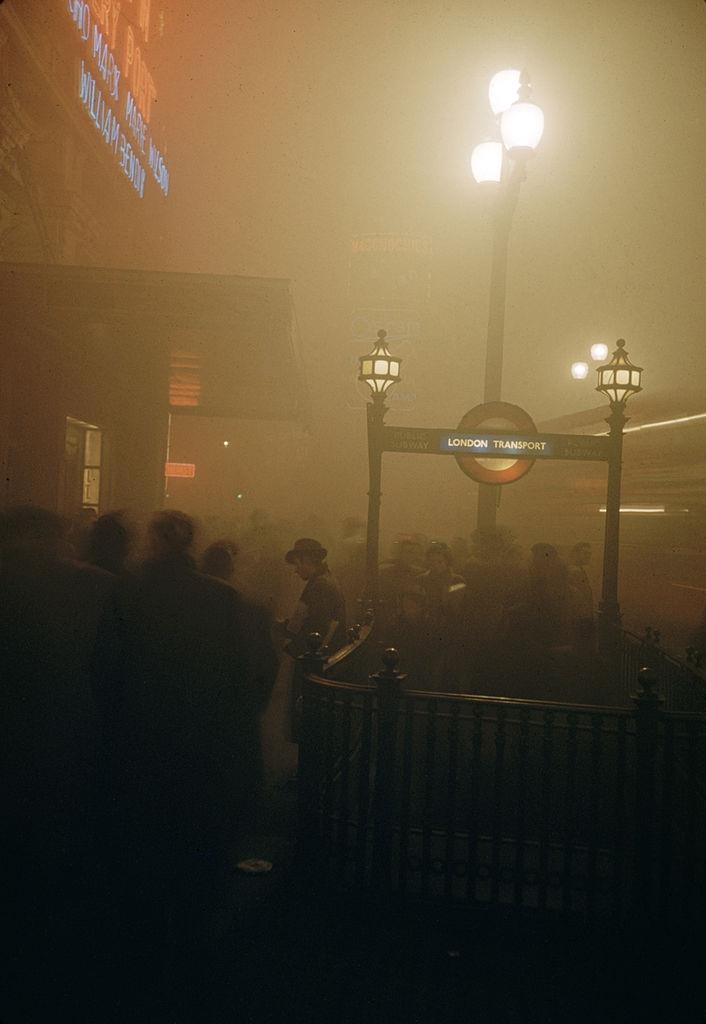
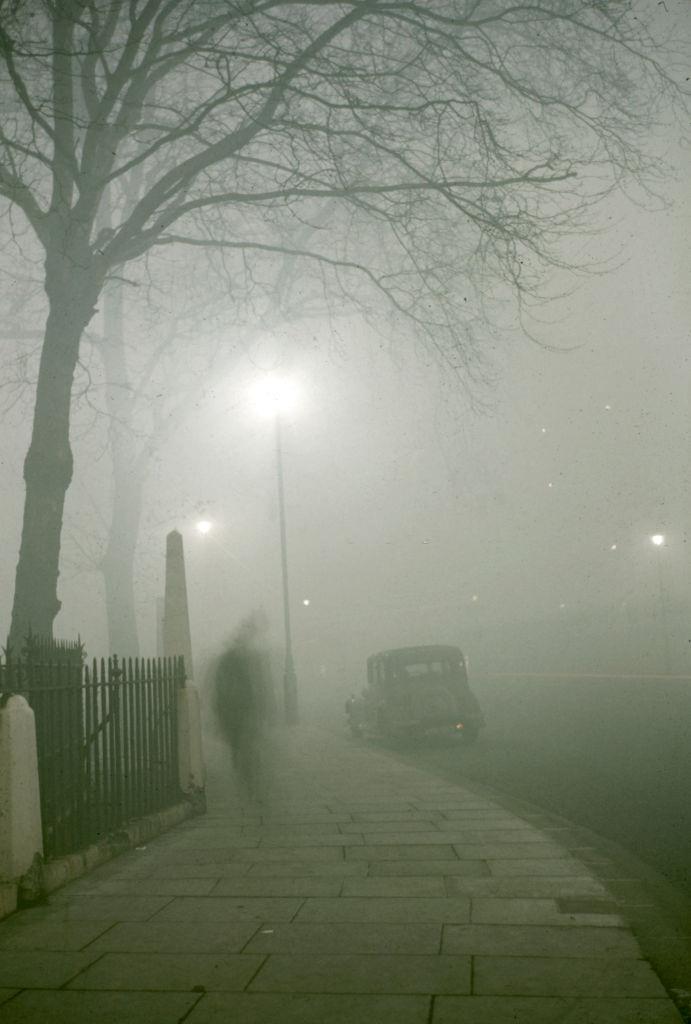
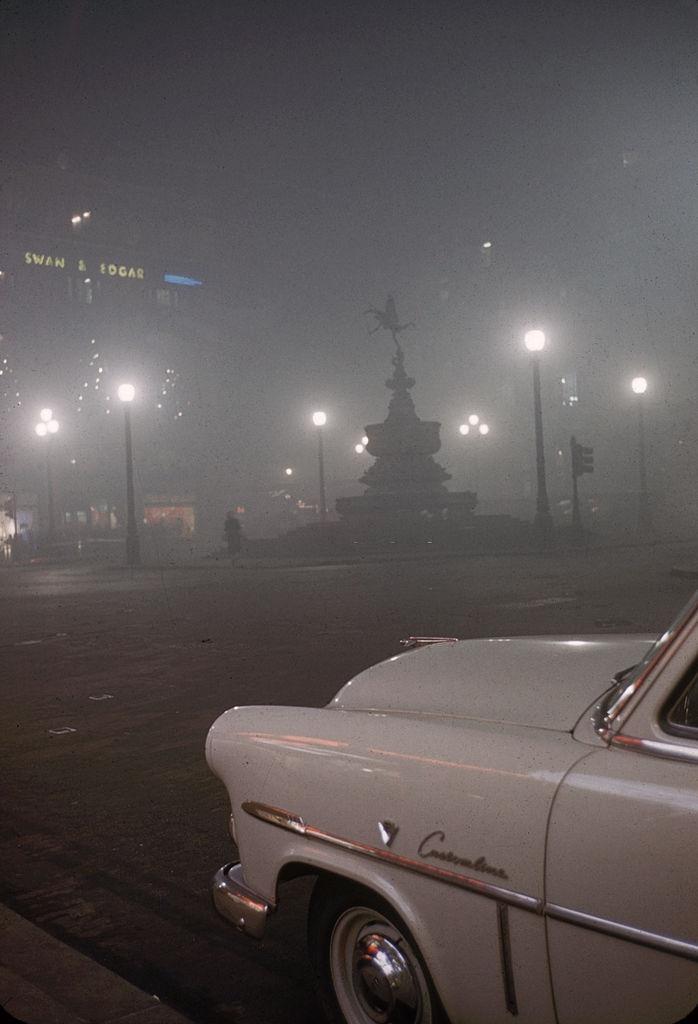
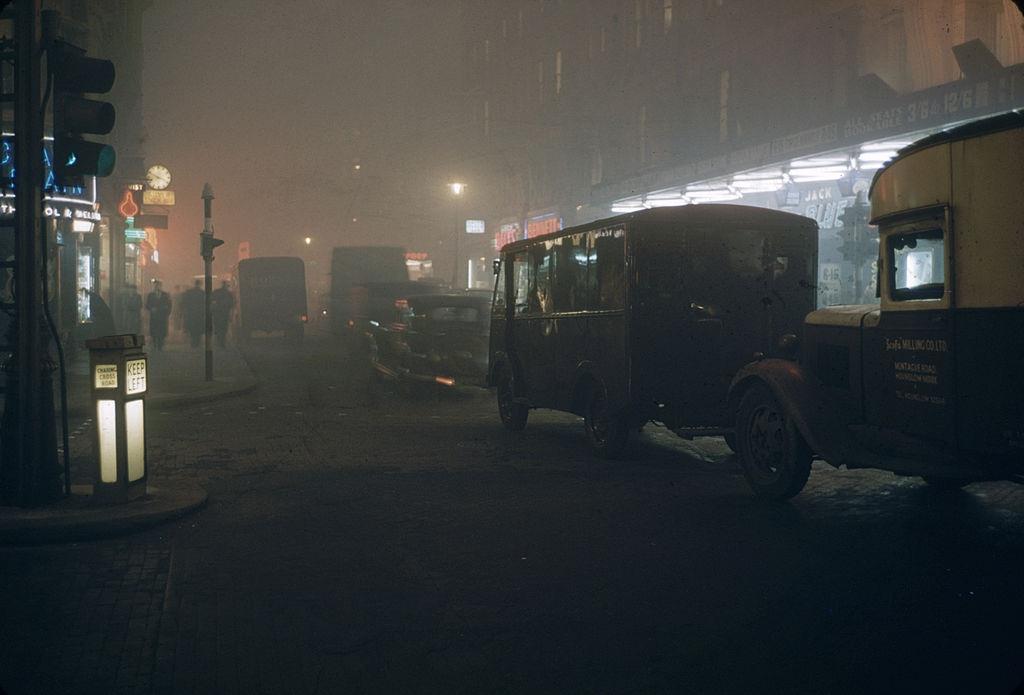
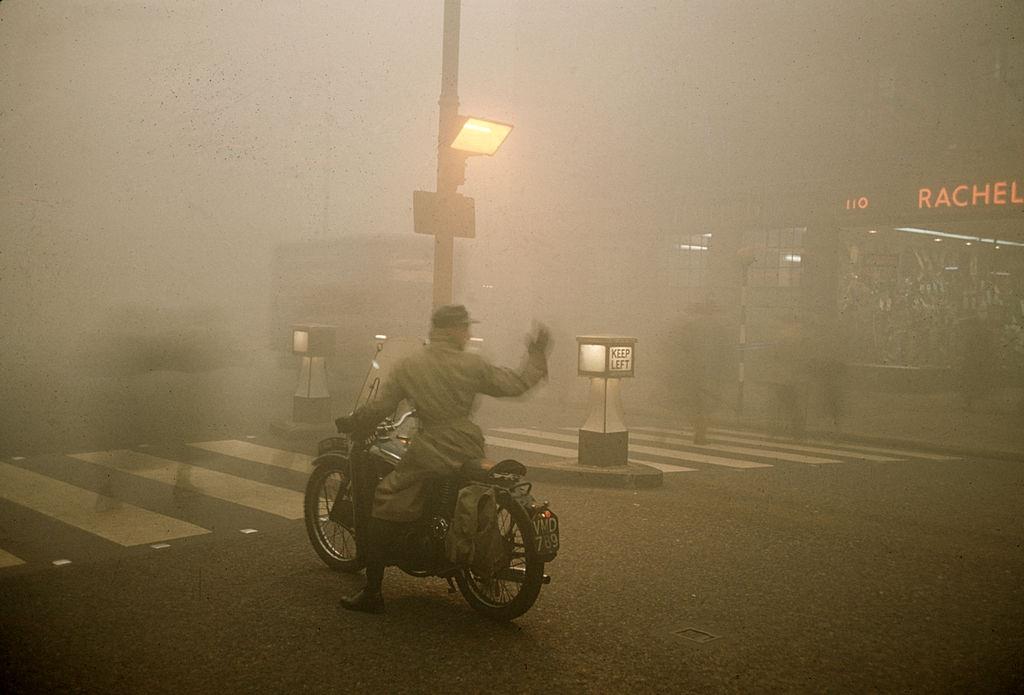
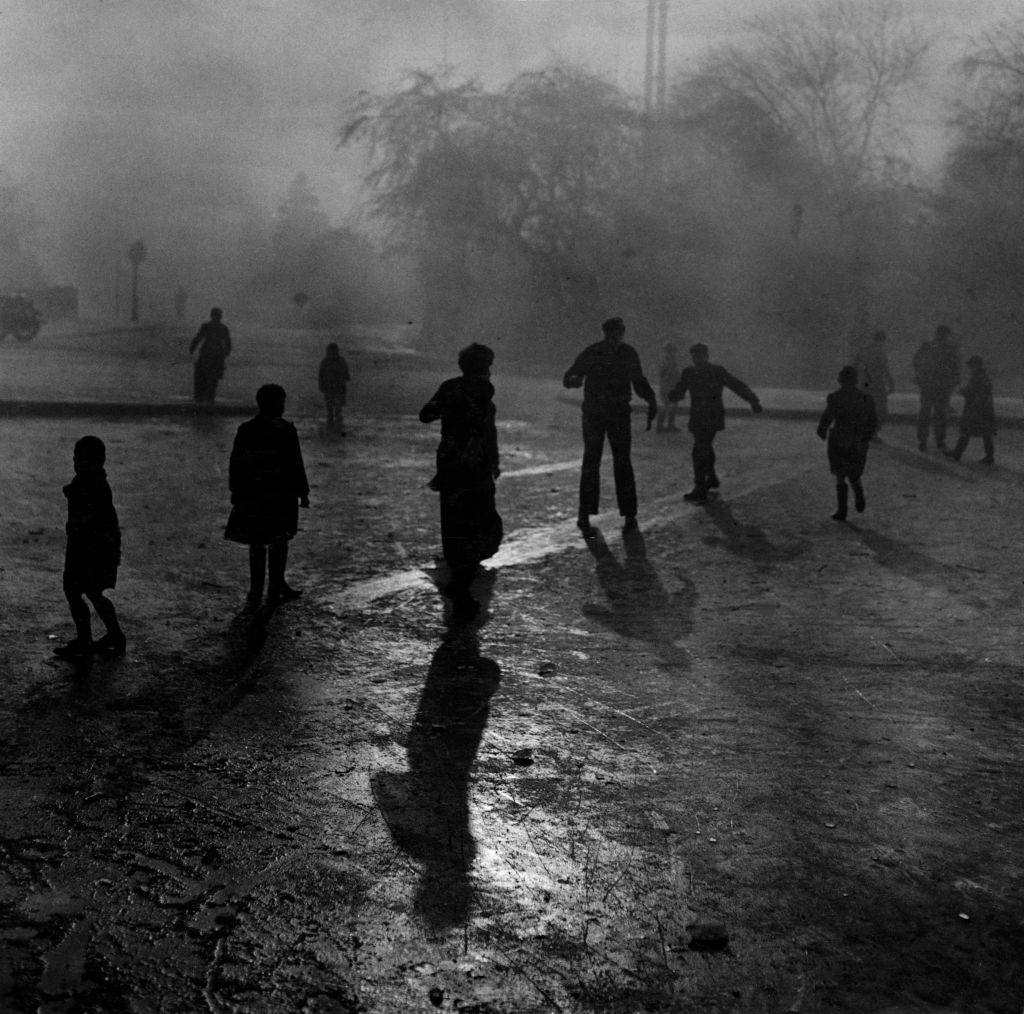
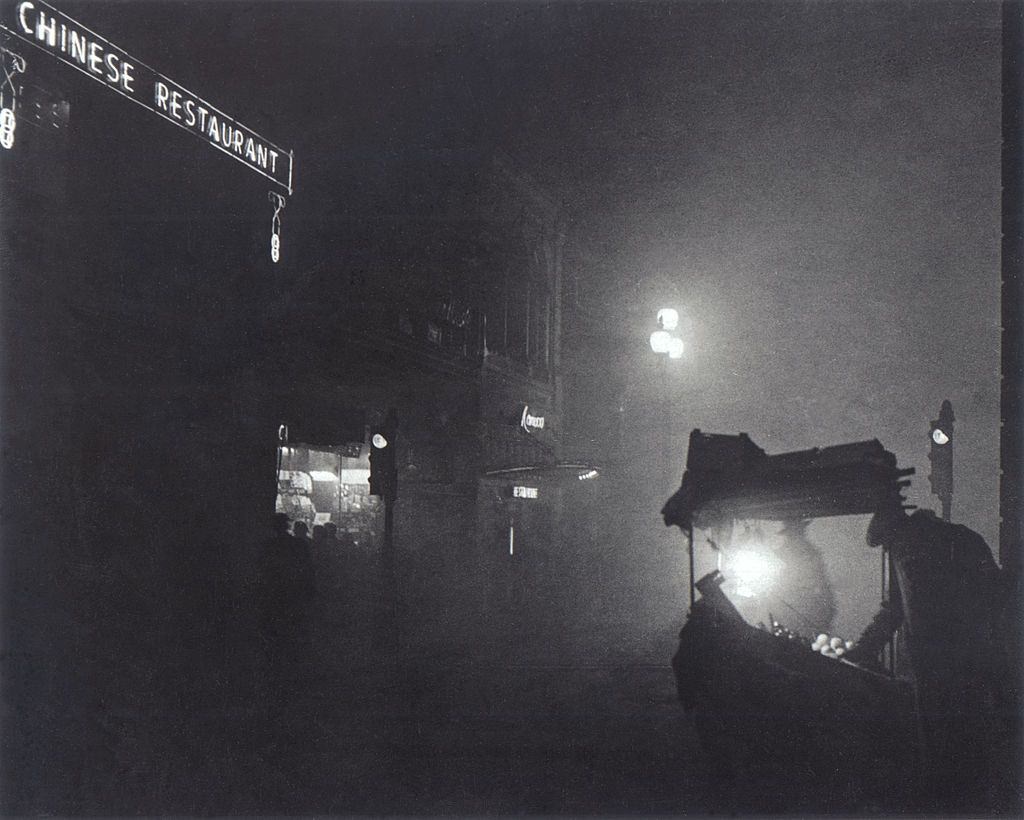
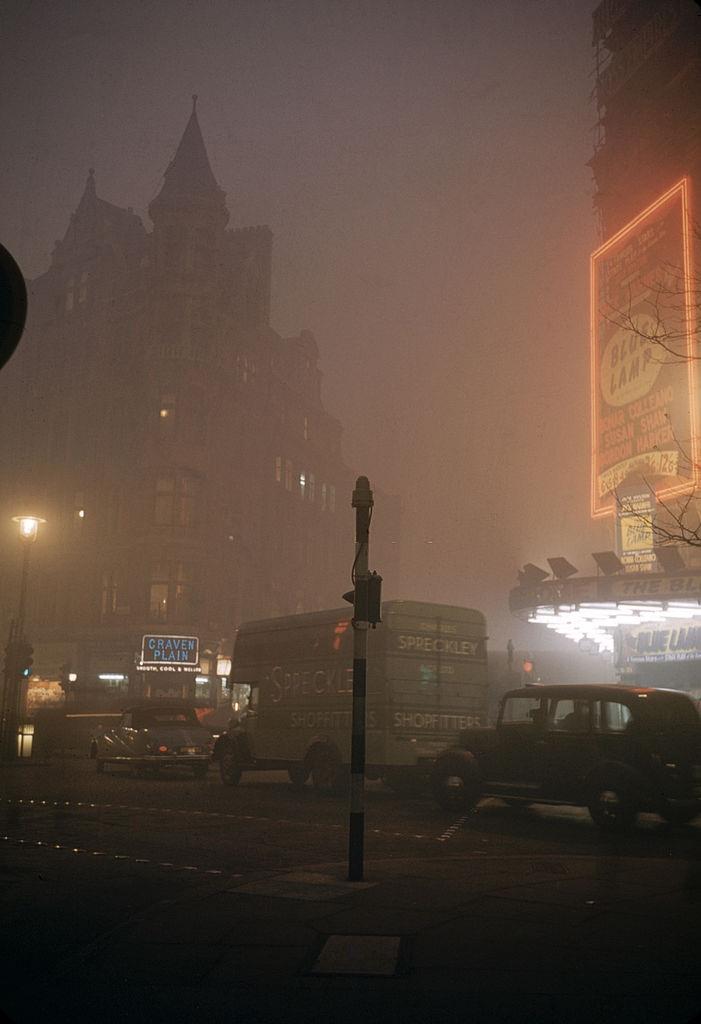
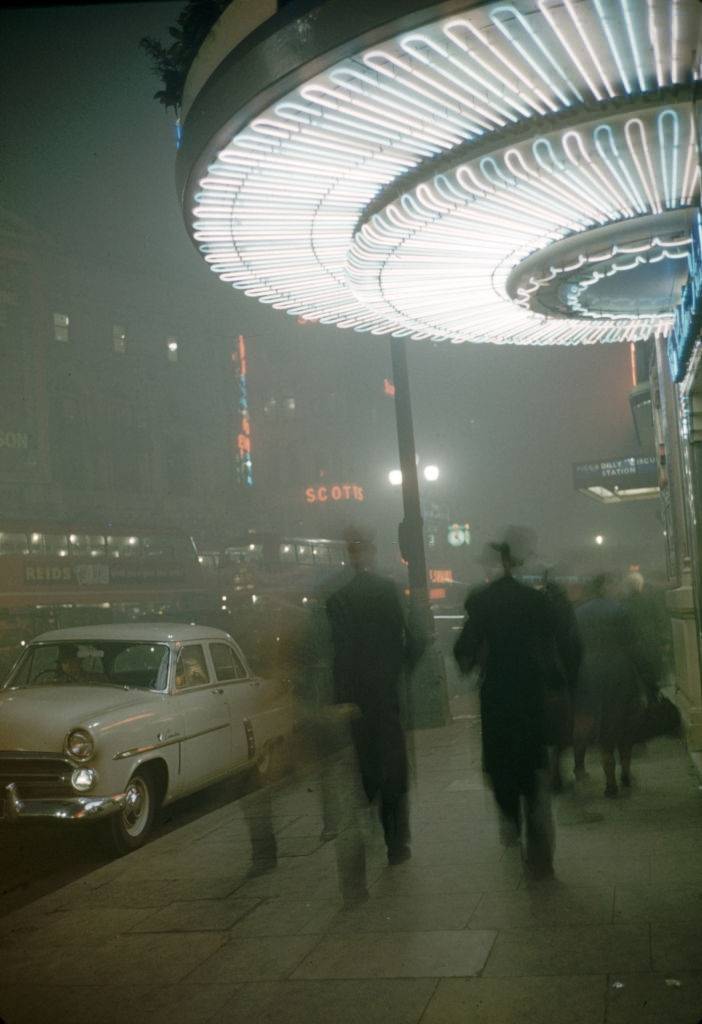
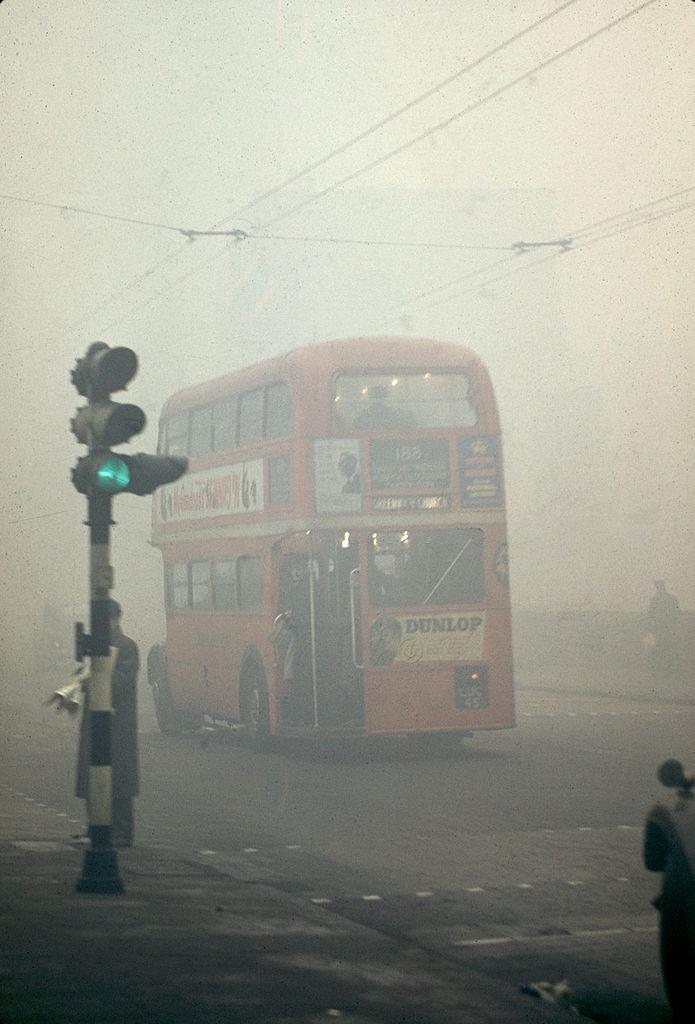
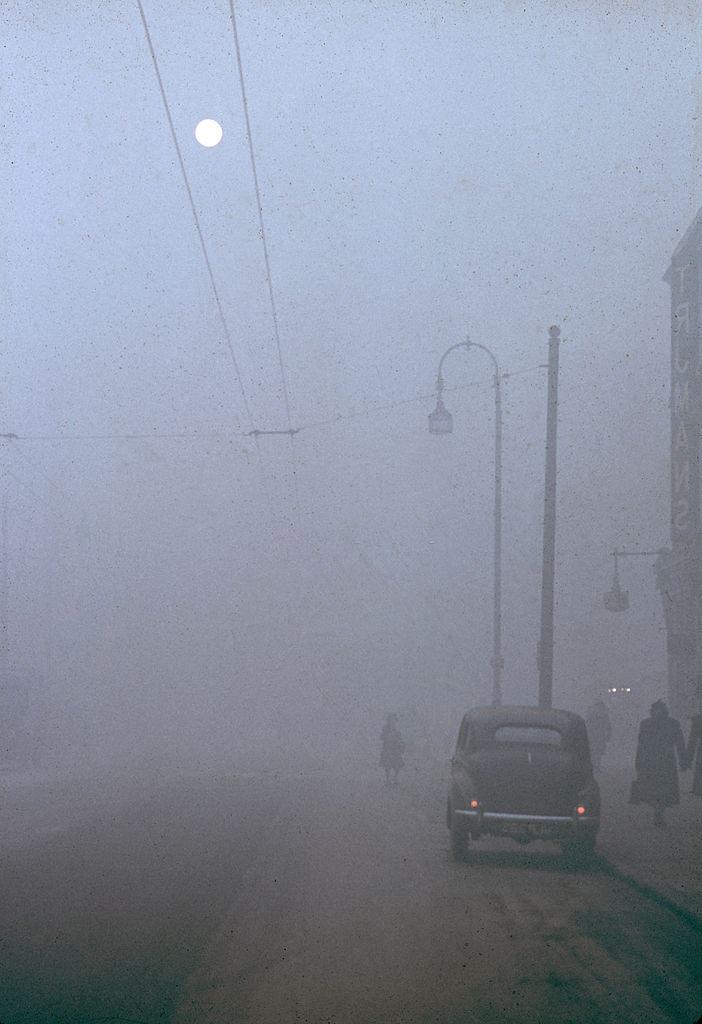
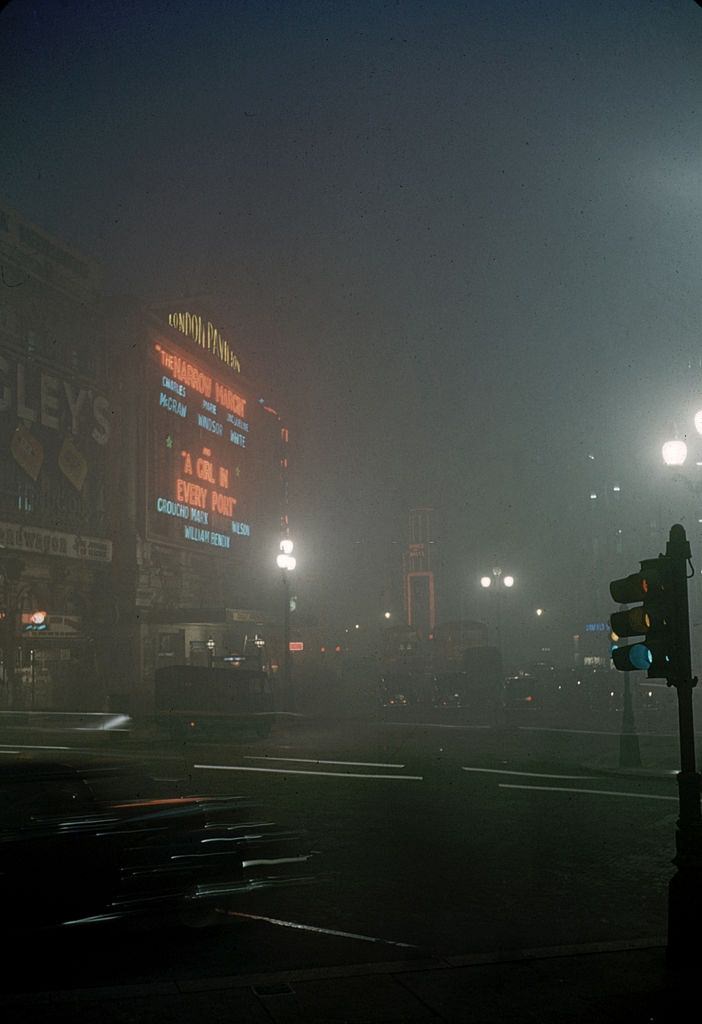
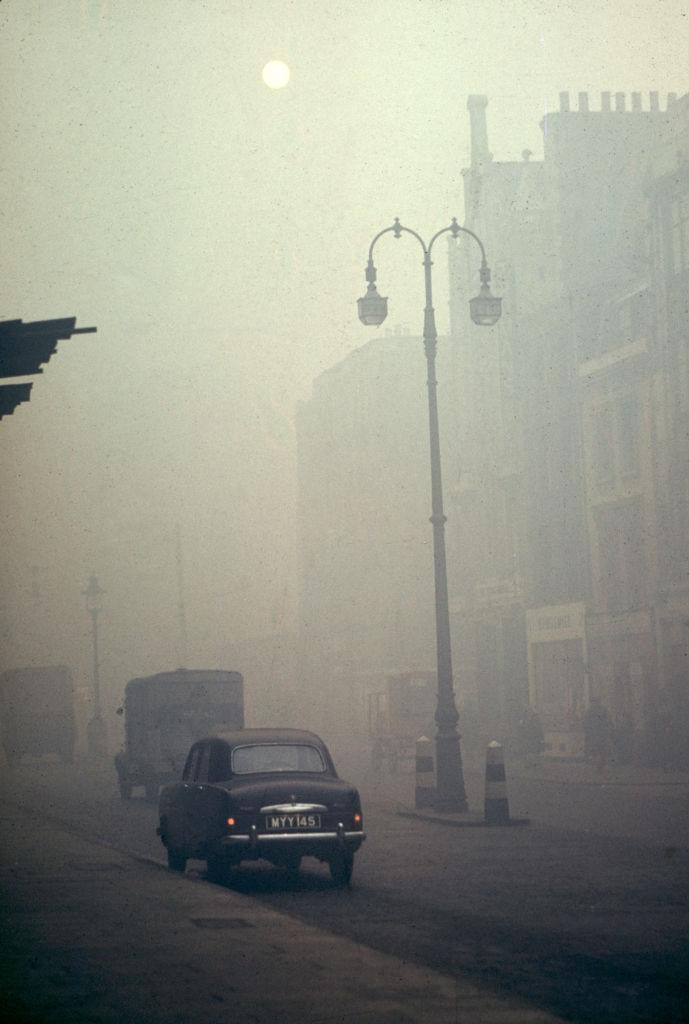
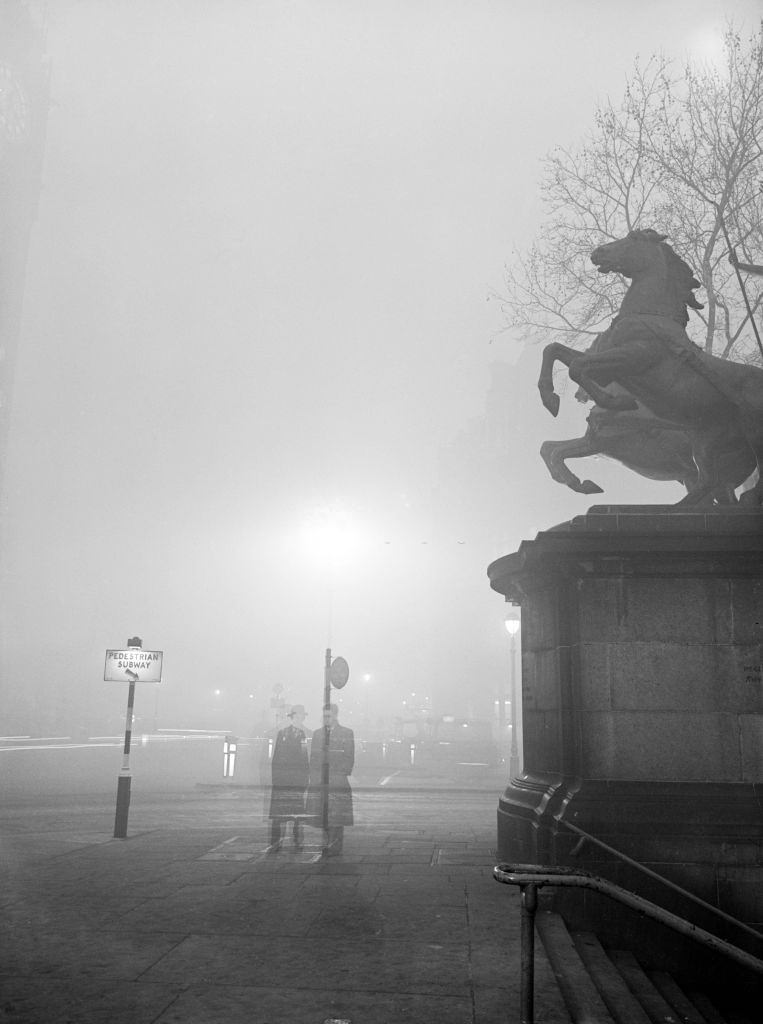
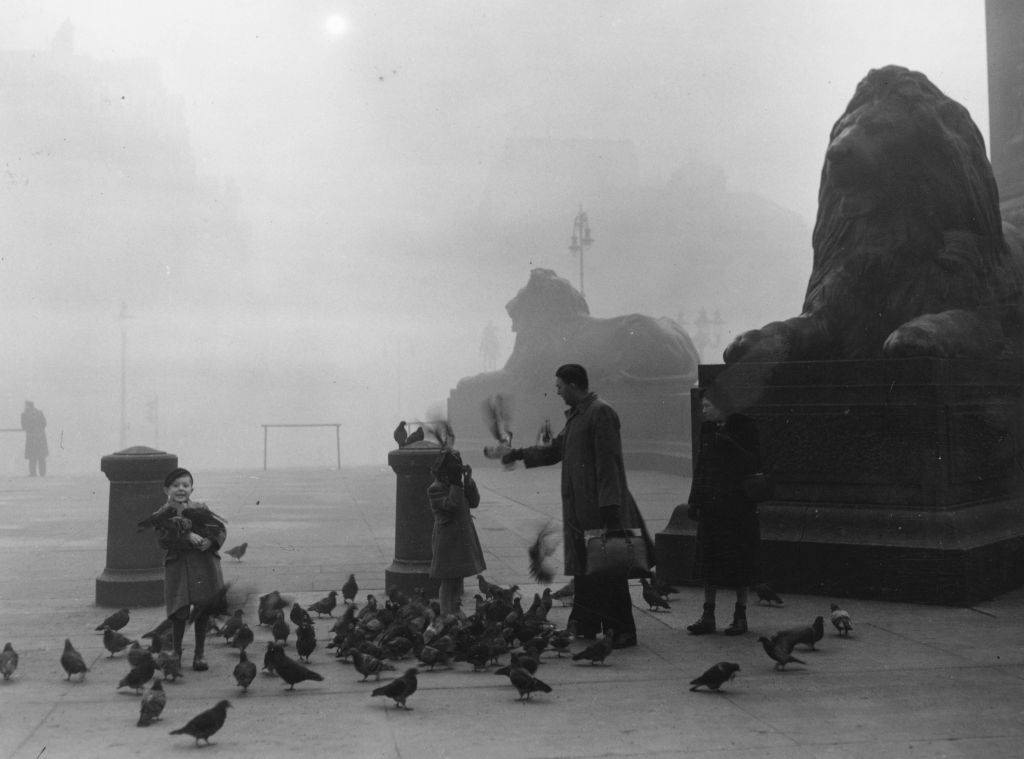
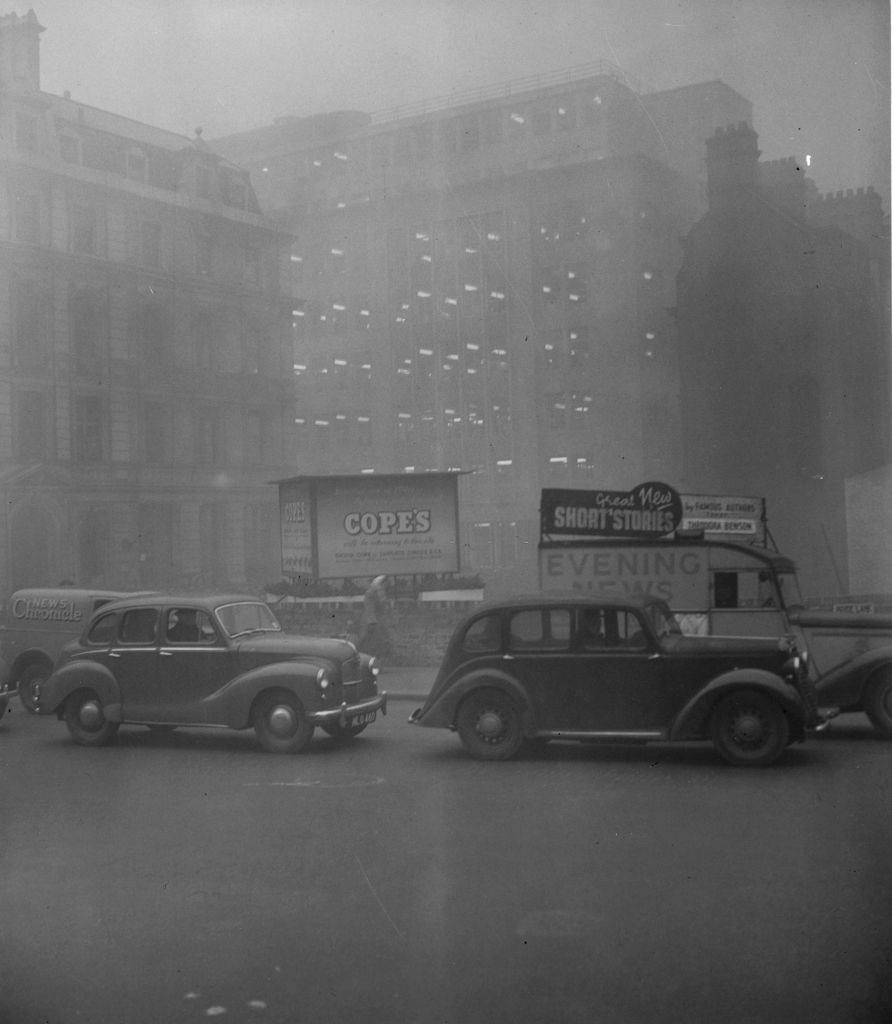
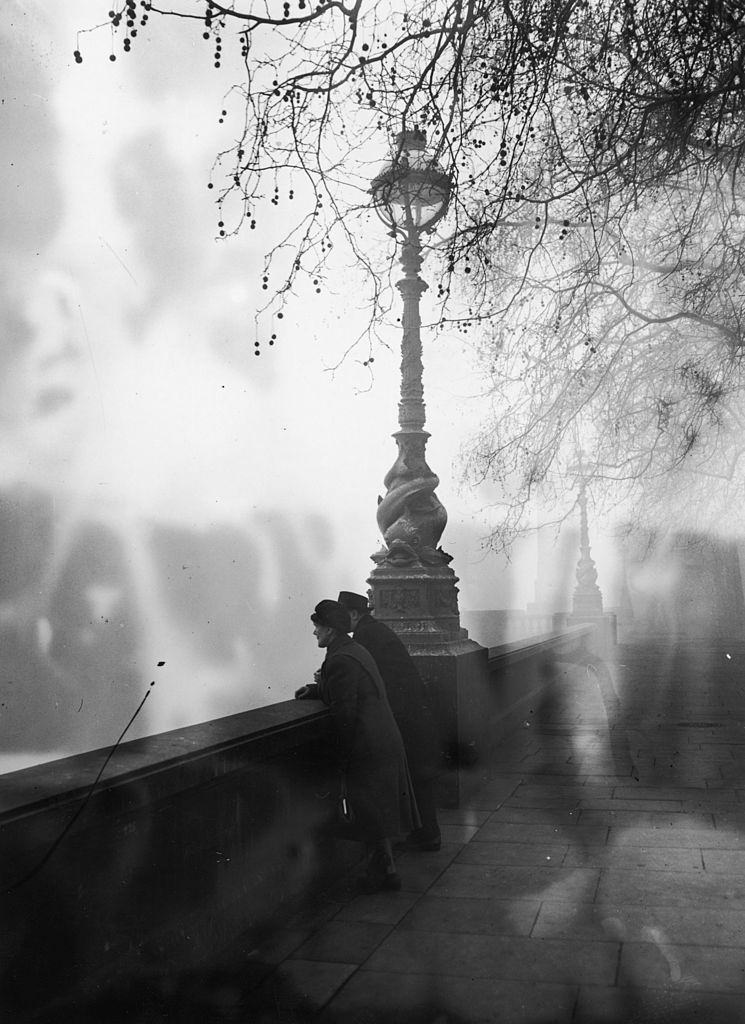
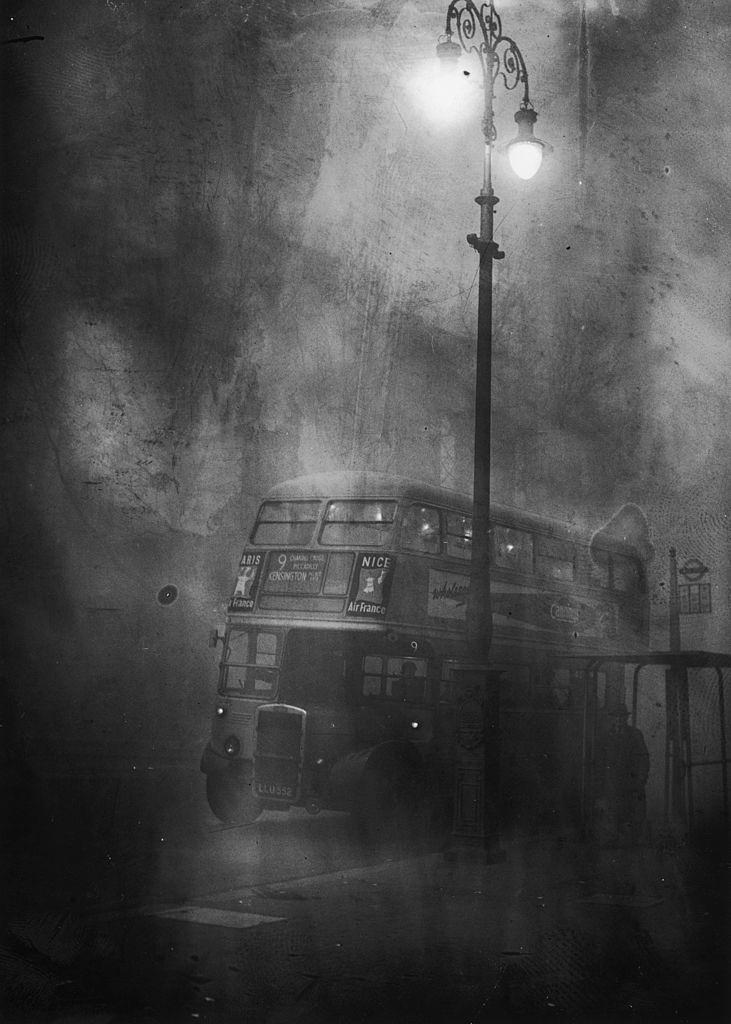
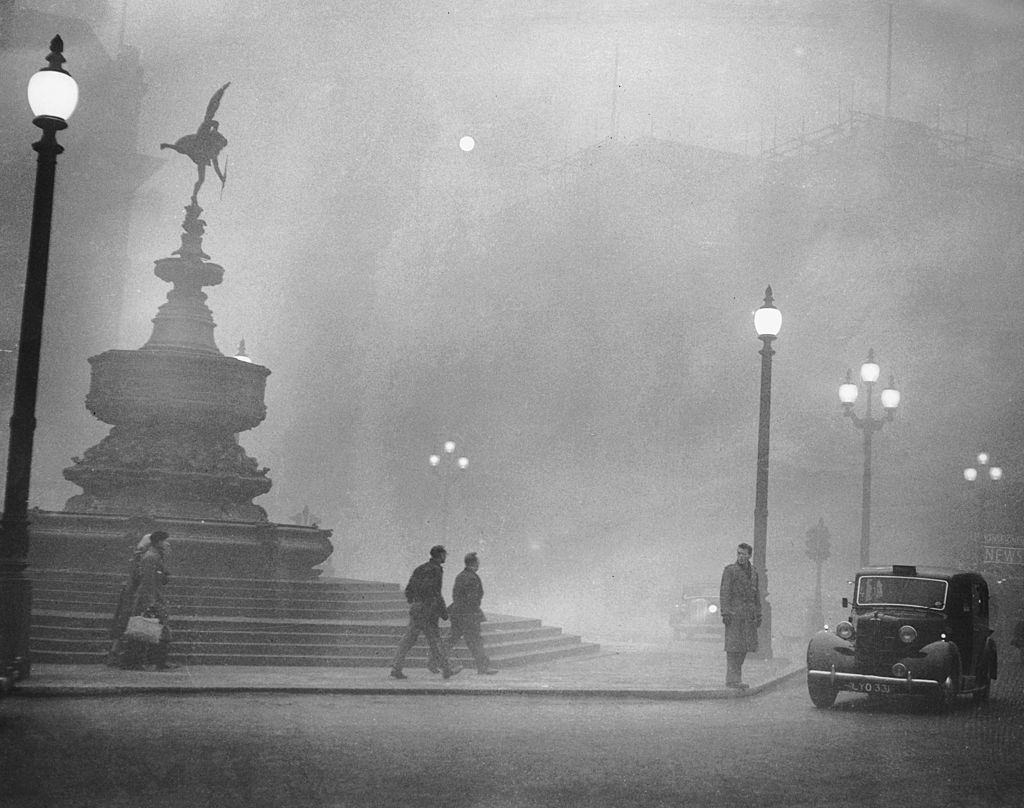
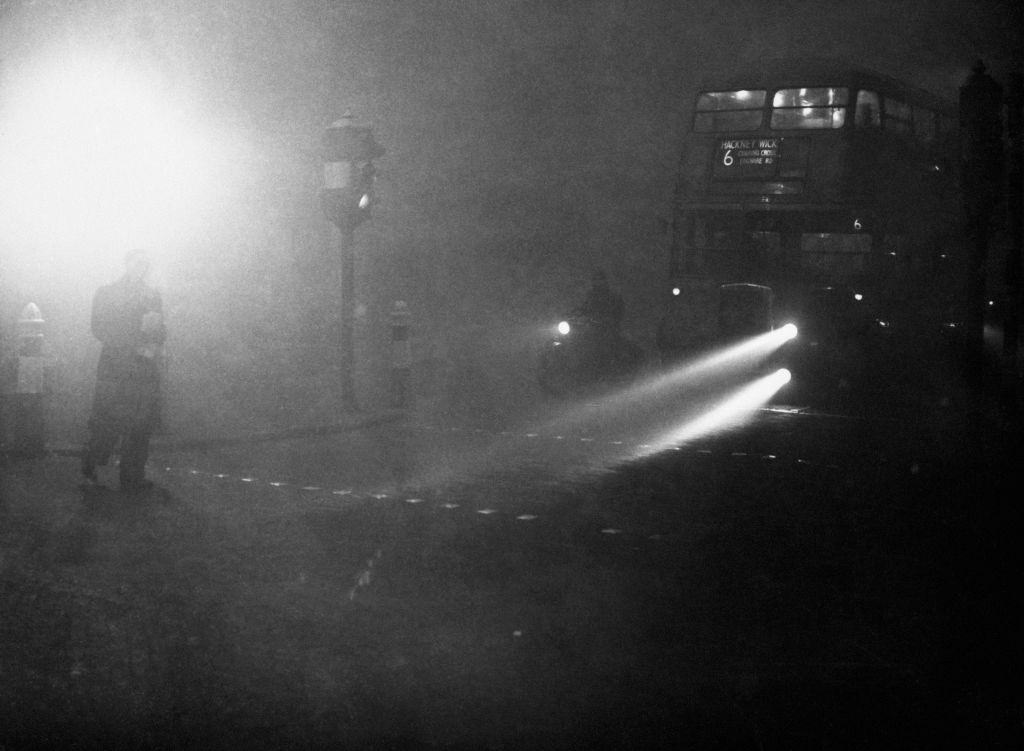
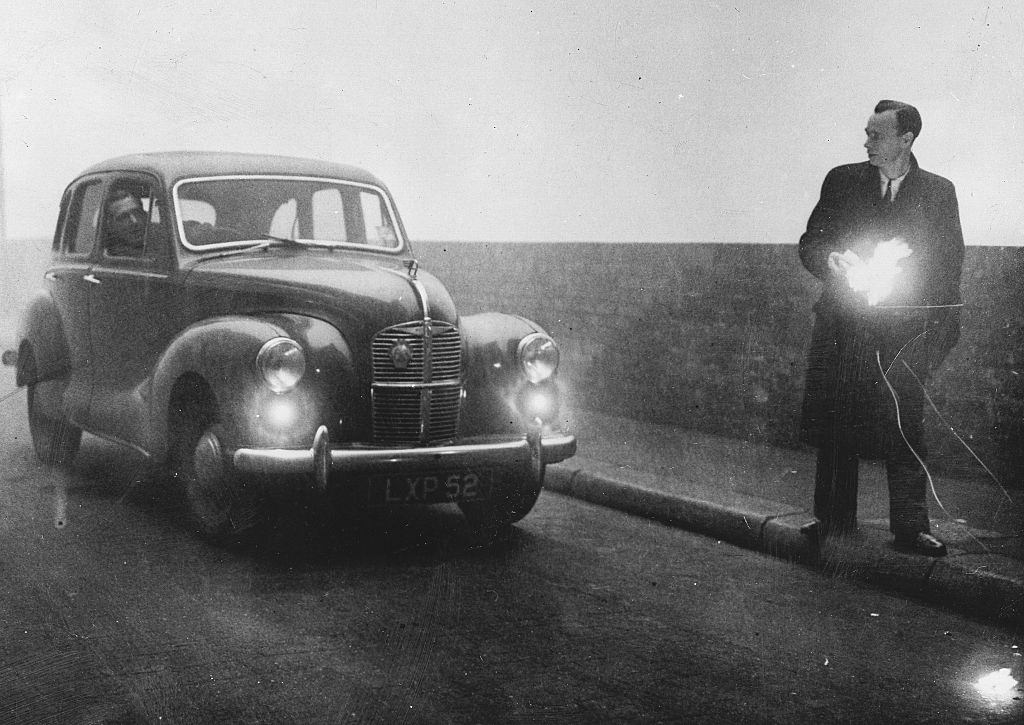
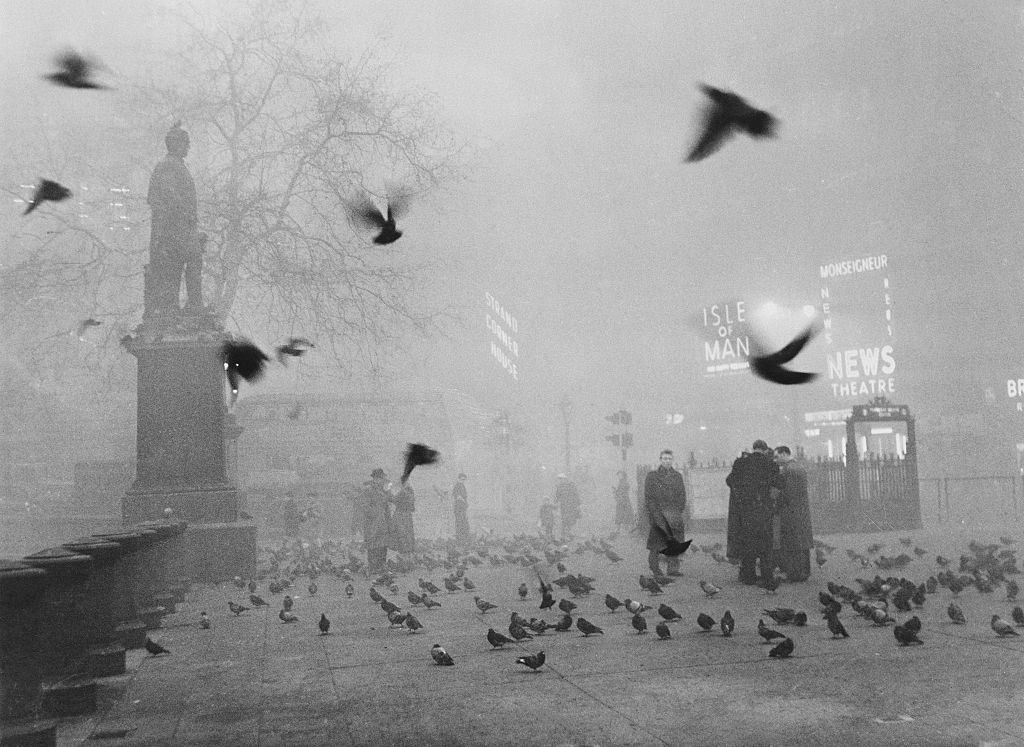
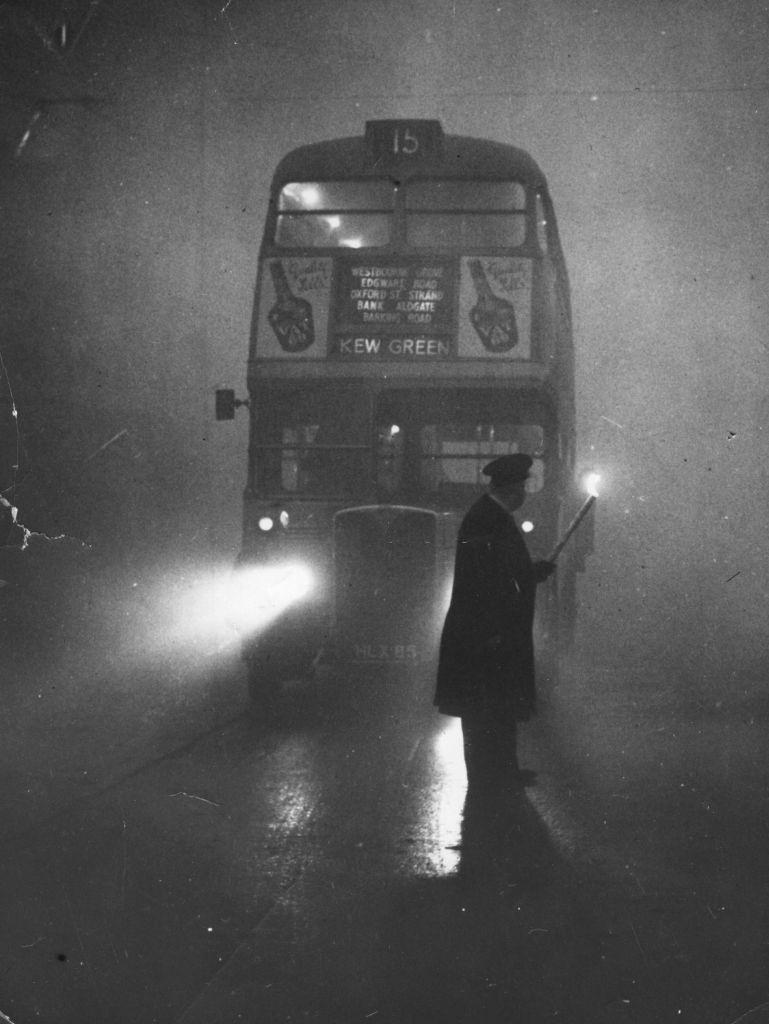
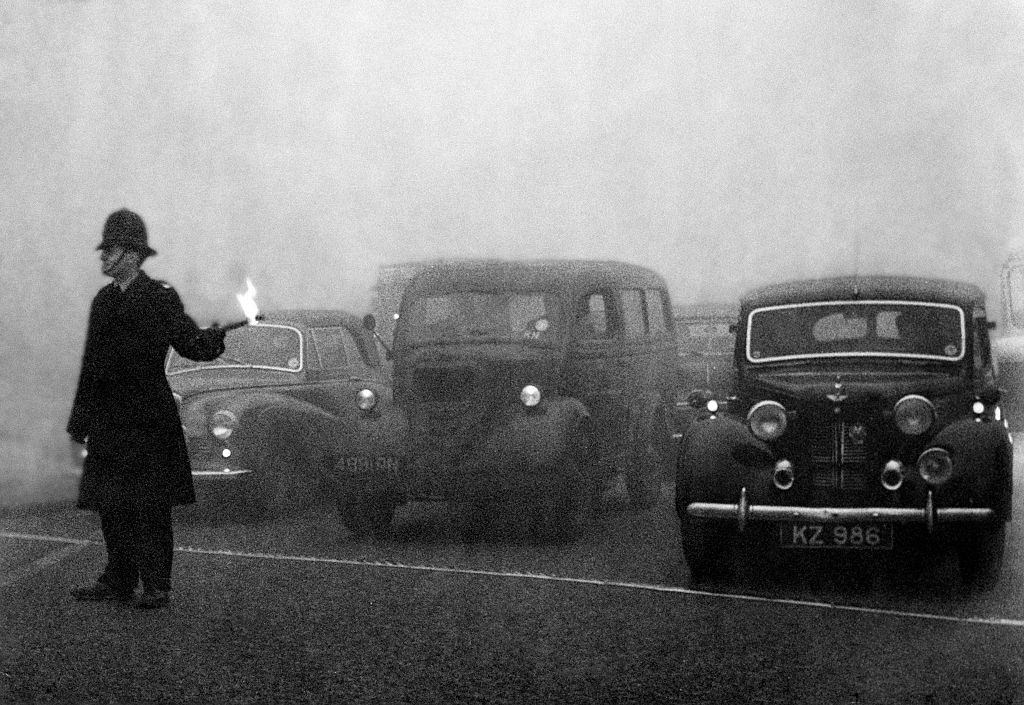
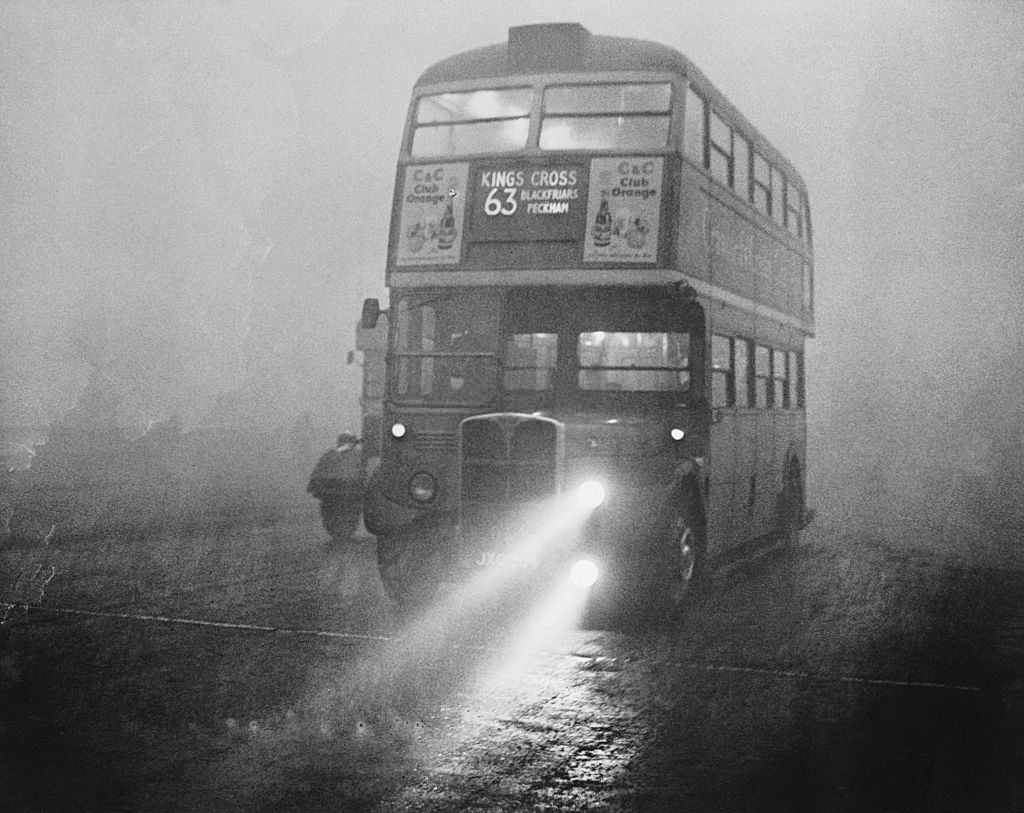
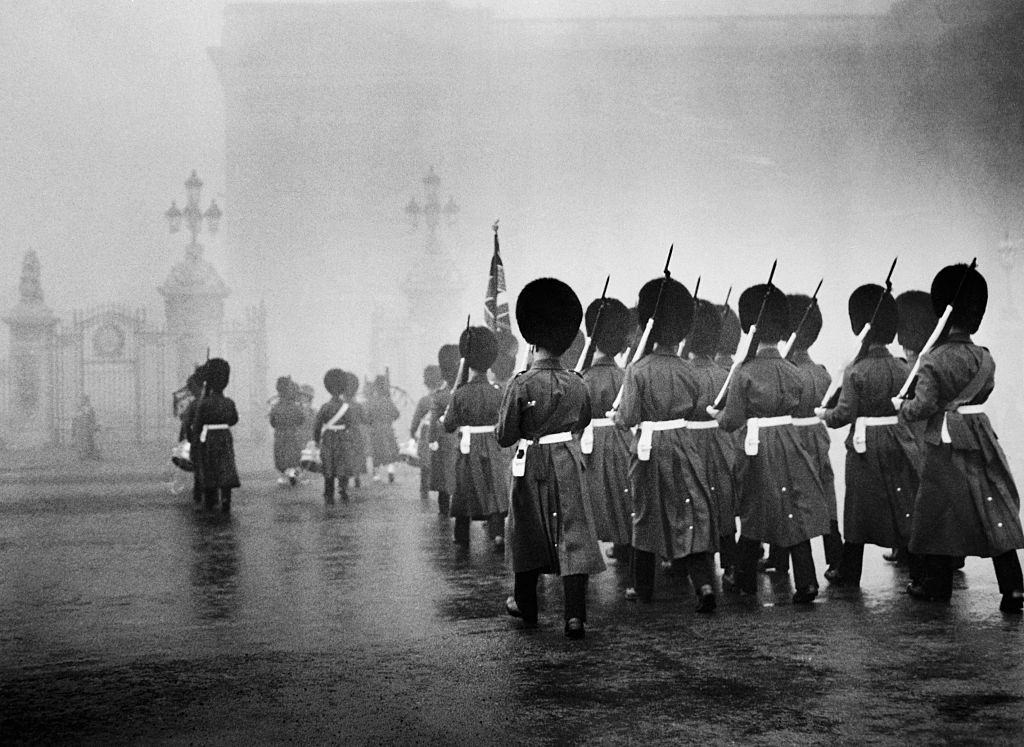

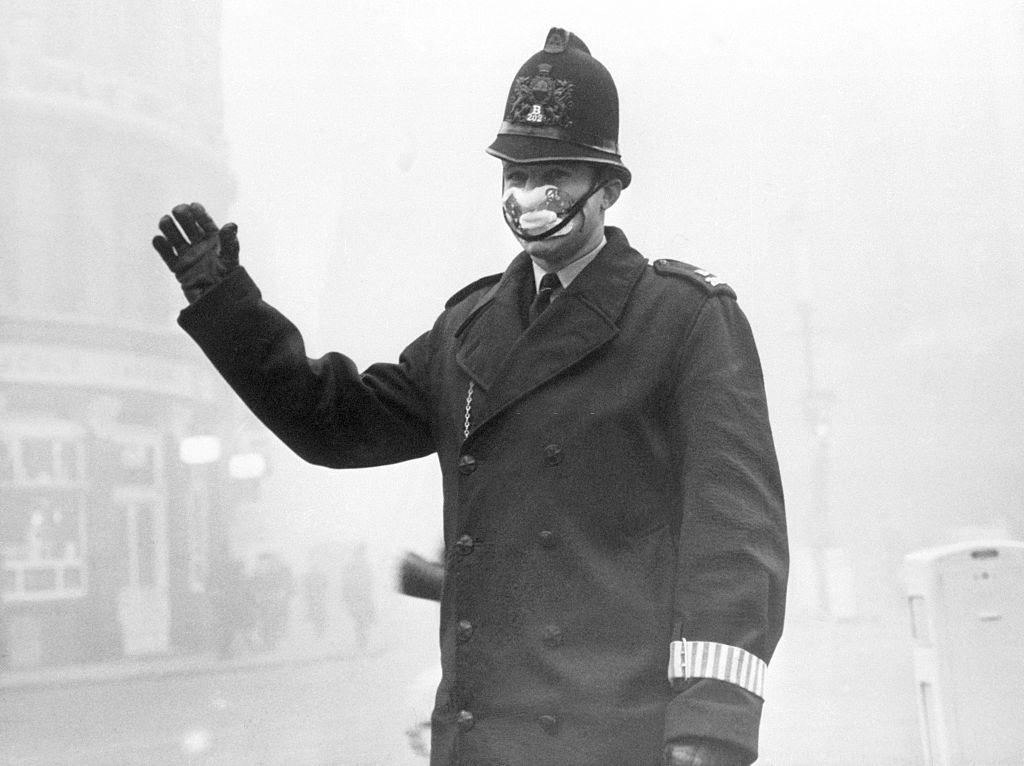
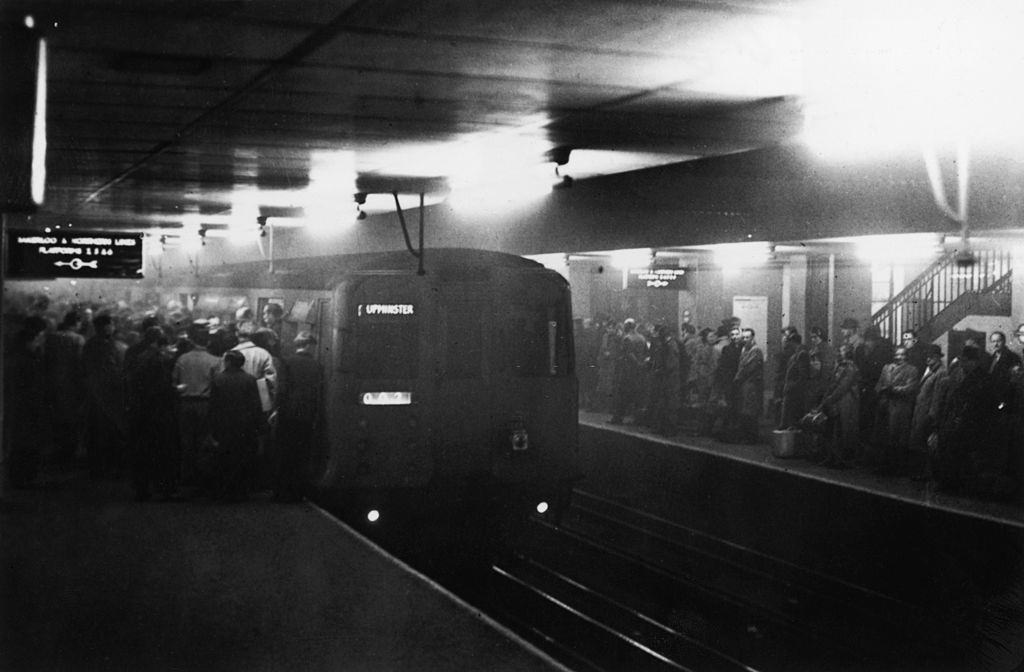
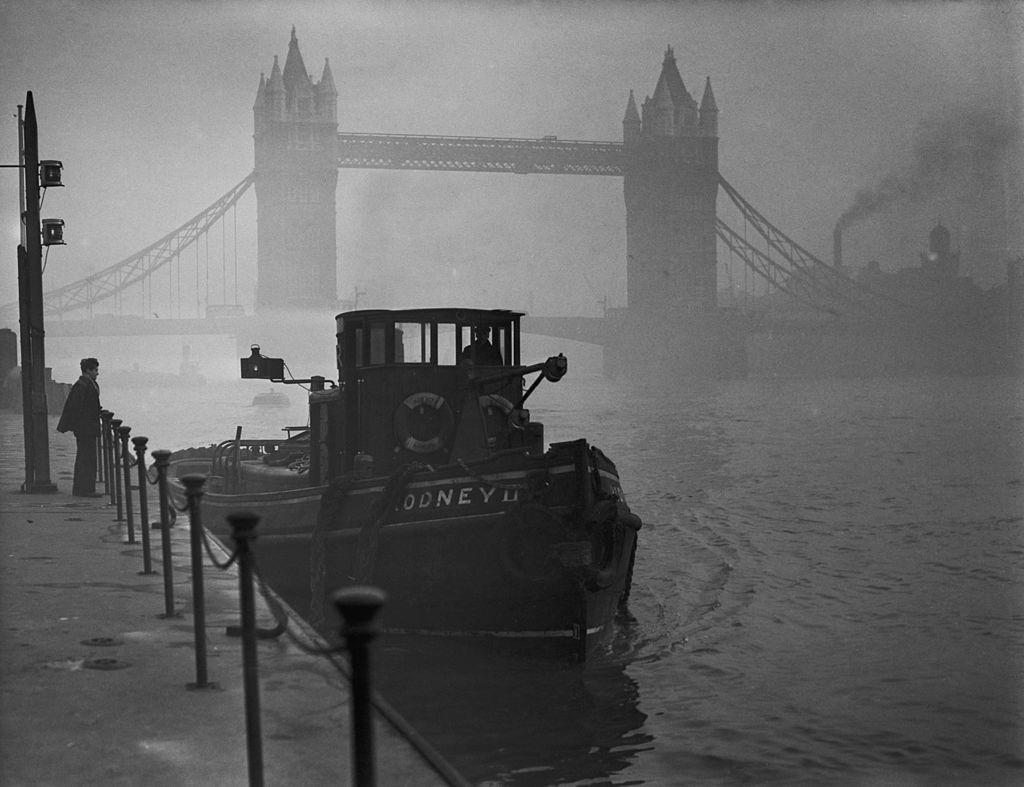

London sits in a horseshoe shaped bowl opening to the east and the North Sea. As a result, any cold winter, east winds (from Siberia) gets trapped in that basin. Heat in those days was mostly by coal fires in open grates, one to a room and not very efficient. 1952 was only seven years after the end of the war and most things were hard to come by, including coal. In London the trams (Street cars) had just finished running and the tracks were being pulled-up. In many places the road level around the tracks was made up of wooden blocks as this kept down the noise. The blocks were put down with grain of the wood up and down and not parallel to the tram rails. The blocks were saturated with coal tar to make them waterproof (it was cheap). Sometimes this tar layer was up to 4 inches thick. Any way, when the tracks came up the wooden blocks were left at the side of the road and many people used them instead of coal for heating. Knocking off the coal tar coating first they burned like crazy producing large amounts of smoke which became mixed with the cold trapped air which became smokier and smokier. Not nice. I remember breathing IN through a handkerchief to find a dark yellow stain upon it. The smog was so thick that you could not see a hand extended at arms length and many people, especially older folk, died of lung related illnesses. Road transport became a night-mare with bus conductors walking in front to show the way! This situation lasted for 3-4 days until the wind blew from the south-west and pushed out the smog. That I remember, there were two or three lots of smog that winter. My theory is that the smog would not have been so bad had the wooden blocks not been burnt.
The other day I mentioned this to my class on teams, and one of them said that many deaths were caused by people falling into the Thames and drowning. Now that you mention it, I’ll take a closer look at that.
The smog never ended. It just moved to New Delhi.
It doesn’t look great to me… it looks pretty bad.
Oh, how I miss those pea-soupers, one eye out the side window watching the white line, the other scanning for red tail lights. Oh, how I miss those days.
Series 1 of The Crown has a good episode about the Great Smog